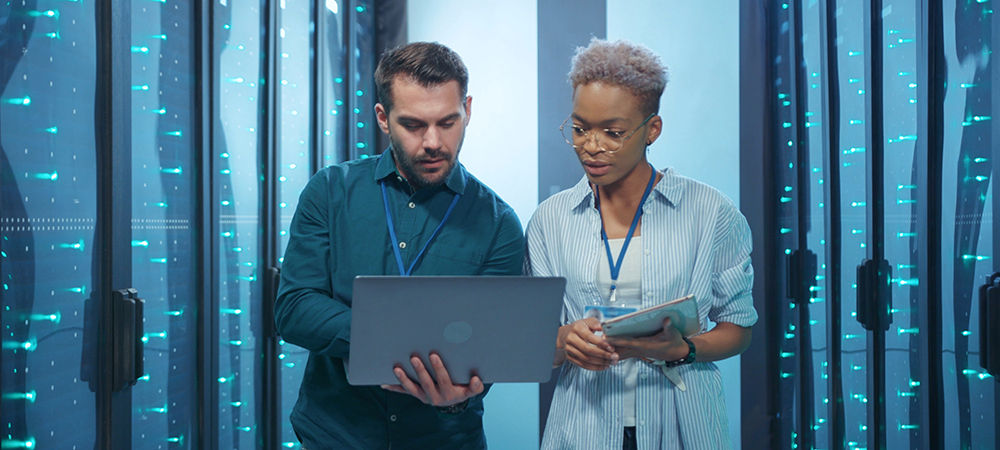There is a continued focus on reducing the carbon footprint of data centres. But how can data centre teams identify the tools they need in order to boost efficiencies and save energy? Sanjay Kumar Sainani, Global SVP & CTO, for Data Center Business Unit of Huawei, tells us how data centre managers can use technology to help build a digital energy infrastructure network that implements visualised management for device data.
Data centres lie at the foundation of the digital economy and are indispensable to the digital world. With renewed focus now being placed on carbon neutrality, the huge amount of power that data centres consume has become a key focus for the industry. Put simply, how can refined resource management be applied to data centres, to embrace intelligence, boost efficiency and ultimately save energy?
Huawei’s Data Center Infrastructure Management (DCIM) system embraces digitalisation and intelligence to help build a digital energy infrastructure network that implements visualised management for device data. It uses Artificial Intelligence (AI)-powered management tools to optimise energy consumption, with automated Operations and Maintenance (O&M) and alarm monitoring management. This transforms data centres from mere cost centres into advanced facilities that actively promote service value.
Modern data centres require new management models
Struggling to keep pace with the rapid growth in the number of data centres, which are also increasing in scale, traditional O&M tools are now meeting challenges that they’re singularly ill-equipped to face. With the efficiency and accuracy of manual O&M simply too unreliable, there is also a severe lack of highly skilled O&M staff and data centre resources are not fully utilised. It’s high time, then, for intelligent management systems to step in and take the place of traditional O&M, giving rise to a new generation of advanced data centres facilities.
Built on more than 20 years of large-scale data centres management experience, as well as breakthrough technologies in AI and Big Data, Huawei’s DCIM solution – NetEco6000 – digitalises the design, construction and O&M of data centres , building a 3D virtual digital twin management system in the process. With iCooling@AI – Huawei’s smart cooling technology designed for data centres – NetEco6000 optimises and controls energy consumption, reducing related costs. It also accurately records and intelligently allocates internal resources, improving energy efficiency and driving data centres development toward the age of digital energy.
Recognised in the industry, Huawei NetEco6000 won a Red Dot Award for Brands & Communication Design in 2020, in one of the world’s leading international design competitions for product design, communication design and design concepts.
Digital management with greater visibility
NetEco6000 uses a Building Information Modeling (BIM) digital twin to build a big data base for the intelligent O&M of data centers. Key indicators and parameters of a wide range of infrastructure are comprehensively displayed, offering refined management across a data centre’s entire lifecycle.
A 3D virtual simulation model of a data center is constructed where what you see is what you get. The operating status of an equipment room is made globally visible, with any abnormal devices highlighted to help customers quickly identify potential risks and accurately locate them, boosting work efficiency.
Using AI to maximise energy consumption efficiency
Within the overall management system, the cooling devices of Huawei’s iCooling@AI Solution don’t need any customisation. With only a small number of sensors required – representing only a minor hardware investment – it’s relatively easy to optimise energy efficiency over the long term, in turn slashing energy consumption. AI-powered diagnosis of energy efficiency helps optimise operations, improving the Power Usage Effectiveness (PUE) of a data centre by 8% to 15%.
Ensuring zero service interruption with predictive O&M
With NetEco6000, data centre O&M automation radically reduces the skillset that O&M staff need, as well as the manual workload and associated costs. And by transforming reactive maintenance into something that’s predictive and proactive, problems are prevented from happening before they occur, resulting in fewer costly hardware replacements. With such drastic improvements made to simplify O&M, labour costs are cut by 35% and data centre reliability is improved to ensure zero service interruption.
Intelligent operations and efficient resource utilisation
Traditional operations management allocates significant manpower to inventorying assets, even though the results are often inaccurate. This already inefficient process strains to breaking point, given the increasing data volumes of today. Scientific, accurate analysis is sorely needed.
NetEco6000 is equipped with U-position electronic labelling. When the location of an Information Technology (IT) device changes, the U-position sensor automatically detects the change and reports and updates asset information in real-time, eliminating the need for manual stocktaking and making it far simpler to manage a large number of assets. By analysing physical space, power, cooling and network capacity, available resources can be accurately located and pre-allocated, using intelligent operations to maximise resource allocation.
With Huawei’s NetEco6000 intelligent management system capable of managing multiple data centres on the same platform, flexible system expansion in the future is easy, with zero hardware restrictions in place.


